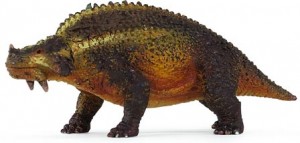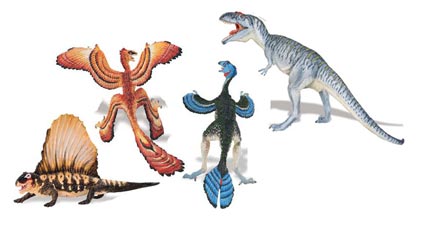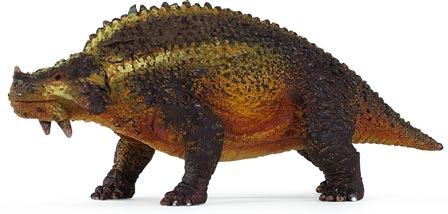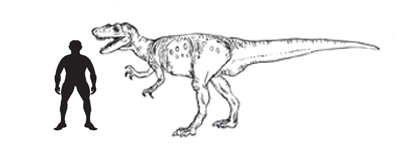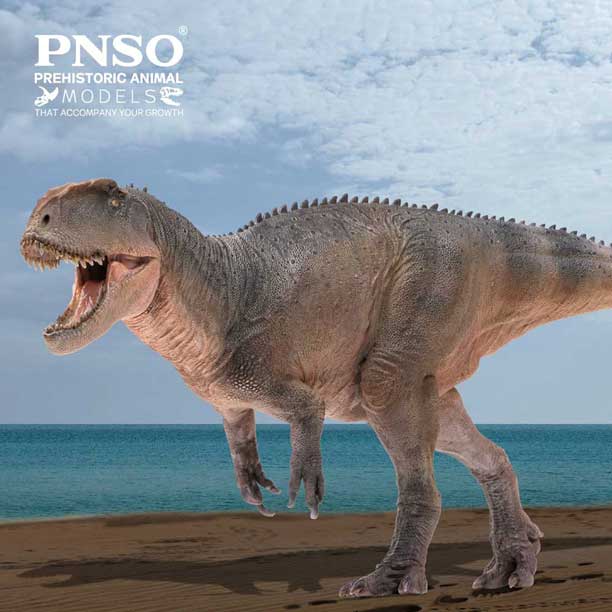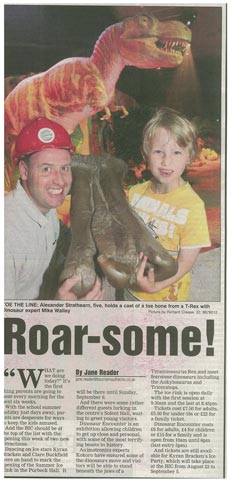Naming Female Dinosaurs – use “a” not “us”
Team members at Everything Dinosaur get asked all sorts of questions by young dinosaur fans when we are out and about visiting schools. Now that most of the schools in the UK have broken up for the Summer holidays, the questioning does not stop, we get sent emails or we are cornered at a dinosaur event and put on the spot.
Our experts try to answer every enquiry the best they can and do follow them up, sending out more information if an a particular query requires it. For example, one of our team members was asked the other day why Maiasaura had such a strange name compared to other dinosaurs. Maiasaura was a Late Cretaceous hadrosaur (hadrosaurine, duck-billed dinosaur).
Fossils of this particular dinosaur have been found in North America and the animal is most closely associated with the Upper Cretaceous sediments at Two Medicine Formation near Choteau in western Montana. On a visit to the area in 1978, the famous American palaeontologist Jack Horner was shown a collection of tiny dinosaur bones by a group of amateur fossil collectors. Jack, recognised the remains as fossils of baby dinosaurs, and, when the location was fully explored, a fossilised nesting colony of Maiasaura was discovered. This site in Montana has yielded over 200 individual specimens, ranging from unhatched eggs to fully sized adults.
A Scale Drawing of an Adult Maiasaura with a Nest
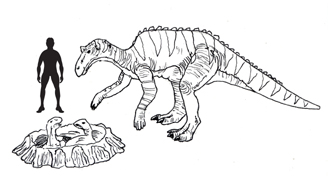
Picture credit: Everything Dinosaur
Dinosaurs
It seems that Maiasaura lived in large herds and migrated to favourite nesting sites to breed and raise their young, just like some modern birds. Something like, fifteen individual nests were discovered by Jack Horner and his team, but the site itself is much larger with extensive fossil rich sediments to explore. The Maiasaura built nests by piling together leaves and soil in a similar fashion to Alligators. The rotting vegetation helped incubate the eggs. When the eggs hatched the young stayed in the nest for sometime and depended on the parents to feed them (altricial behaviour).
Jack Horner and his colleagues estimated that the baby Maiasaura stayed in the nest for about one month. Interestingly, the space between each nest on the Montana site was quite uniform. There was approximately 7 metres between each one, just about enough room for an adult Maiasaura to squat next to her nest to guard it. This type of formation is found in many sea bird nesting colonies today.
Questions About Dinosaurs
As Maiasaura is associated with a nesting colony and altricial behaviour she was named “Good Mother Lizard” and since it was suggested that the majority of adult skeletons associated with the site were female, Maiasaura was given the female gender for her name. The female form is “saura” and the male, more commonly used format is “saurus”. This is why Maiasaura has an unusual ending to her name (binomial name M. peeblesorum).
The Scale Model of Maiasaura by Carnegie Safari
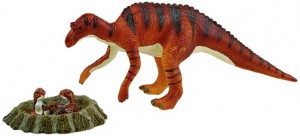
Model of “Good Mother Lizard”.
Picture credit: Everything Dinosaur.
Maiasaura is represented in the modelling world by a super replica from Carnegie Safari. When the model was first introduced, (Carnegie Collectibles Maiasaura dinosaur), the adult Maiasaura was depicted sitting on her nest. This was not an accurate representation, a fully grown Maiasaura would have crushed any eggs she sat on. The model makers introduced a second model showing the mother Maiasaura and her eggs separately.
To view the prehistoric animal models and figures in the Wild Safari range: Safari Ltd. Wild Safari Prehistoric World Models and Figures.
The only other dinosaur with the female form to her name that we can think of is the small dinosaur Leaellynasaura, associated with polar deposits in the southern hemisphere. This dinosaur was named by husband and wife palaeontologists Tom and Patricia Rich after their daughter Leaellyn.



